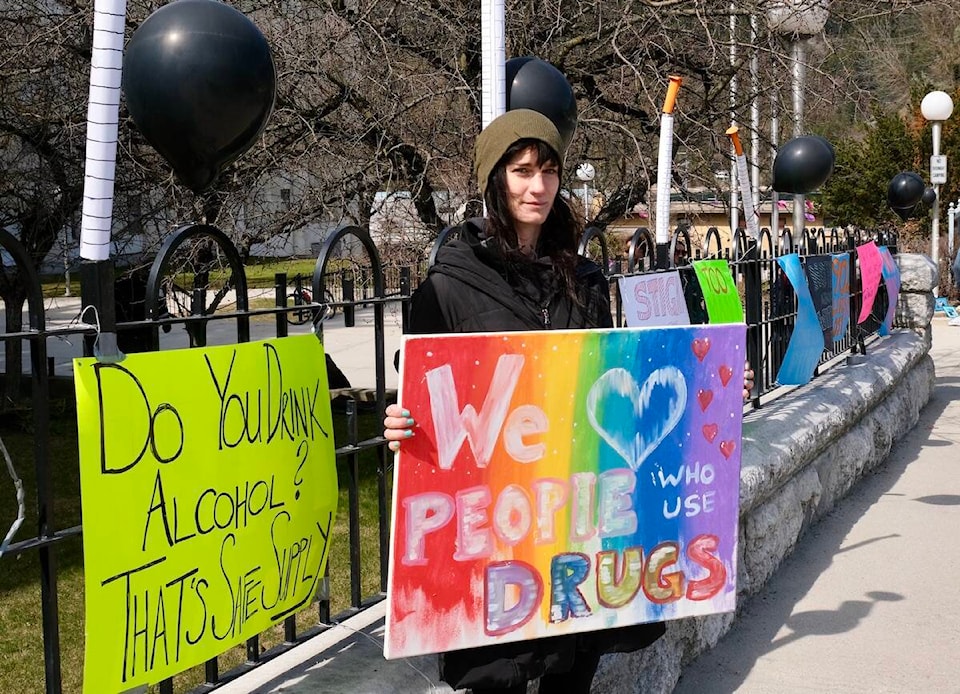Nelson’s police chief says it isn’t yet clear how the decriminalization of drug possession in B.C. will be enforced.
The federal and provincial government’s joint announcement on June 2, that an exemption would be made in B.C. for 2.5 grams of illicit drugs as of Jan. 31, 2023, included several stipulations for what is and isn’t considered a criminal offence.
The exemption says adults 18 years and older won’t be arrested or charged for personal possession up to a combined total of 2.5 grams.
But Chief Donovan Fisher of the Nelson Police Department says there’s been no guidance for what officers should do if they discover a person has more than what is allowed.
“Do the police need to carry little scales around to determine where the cutoff is? And is it 2.6 or 2.7 grams? Is the policy going to be that’s seizable and arrestable, or is there discretion built-in?”
Fisher said there’s also confusion over the federal direction that police will provide information on health and social services as well as voluntary referrals. Should the police carry an intake assessment or escort a person to the hospital?
Fisher doubts it but has not heard otherwise. Police training is among the reasons included in the federal announcement for the seven-month delay to the start of decriminalization.
“It’s not all clear as to what action the police are expected to take when running into the situation.”
The BC Association of Chiefs of Police told Black Press Media that it had originally wanted , but that it supports 2.5 grams.
B.C. Minister of Mental Health and Addictions Sheila Malcolmson told the Nelson Star there will be police who have discretion on a case-by-case basis, and
Fisher says that the description is too vague without direction for his officers.
“If somebody has five grams of cocaine, very likely they’re going to get arrested and the product is going to get seized. But 2.7 grams, OK well here we are back to the question of are the police going to be required to carry scales and then how much leeway do you give for the baggie and how much air is in the bag?
“It can get quite ridiculous.”
One step forward, 2.5 steps back
The announcement was met with tentative praise and plenty of criticism from decriminalization advocates.
Amber Streukens, ANKORS’ harm-reduction coordinator in Nelson, said she has mixed feelings about the plan.
“It’s exciting, it’s historic, it’s groundbreaking. We’re definitely making change, it’s a move in the right direction,” said Streukens.
“However, I’m worried about those who will be left behind, specifically folks who work in remote settings, live in rural and remote locations, folks who live on reserve land, and importantly folks with substance-use dependency.”
The ministry’s core planning table, which included various harm-reduction organizations in B.C., had suggested a non-cumulative total of 4.5 grams during consultations. Groups including the Vancouver Area Network of Drug Users were then angered by the announced cumulative threshold of 2.5 grams, which to make an impact.
Streukens shares that concern. She thinks the plan creates a two-tier system that decriminalizes casual users but not those who suffer from substance use disorder. It also, she says, forces users to more regularly access a supply that has killed over 9,400 British Columbians since the public health emergency was declared in 2016.
“It doesn’t capture the needs of those at risk of toxic drug poisoning. It doesn’t capture the needs of those most marginalized from the drug war.”
In April, Streukens interviewed 27 people who live rurally and use drugs. She found 75 per cent of respondents bought more than 2.5 grams at one time in the previous year, 47 per cent travelled more than 50 kilometres weekly for their supply, and 63 per cent also purchased for more than one person during their trips.
These are the users, Streukens says, who the new rules don’t help.
“We have huge transportation barriers. I can’t necessarily leave community every day so I need to purchase for a few days. Folks have limited mobility and limited access to transportation.”
Last week’s announcement also did not include any changes to safe supply initiatives.
A released in March found safe supply options decreased the risk of overdoses and reliance on street drugs.
Dr. Michael Vance provides opioid agonist therapy to substance users in Nelson. The treatment, which prescribes specific amounts of opioids such as morphine or hydromorphone, reduces withdrawal and craving symptoms.
Vance says he doesn’t believe provincial health authorities are ready to support safe supply and that its efficacy is still being studied.
“It’s a bit of an unknown so a lot of doctors aren’t really comfortable with it,” said Vance. “Even doctors who are in addiction medicine aren’t doing a ton of it. [Decriminalization] is a positive first step but it really isn’t that great for the majority of the patients that I have.”
Vance’s clinic is one of only two in Nelson that offer safe supply options. He criticized Interior Health for providing safe supply in larger centres such as Kelowna or Kamloops, but not committing to programs in smaller cities.
He hopes the public becomes more active in the crisis.
“You really need to write letters and contact your health authority. … I don’t think enough people who are drug users, or family members of drug users, are actually talking to their health authorities and making official complaints.”
READ MORE:
•
•
•
| tyler.harper@nelsonstar.com
Like us on and follow us on .



